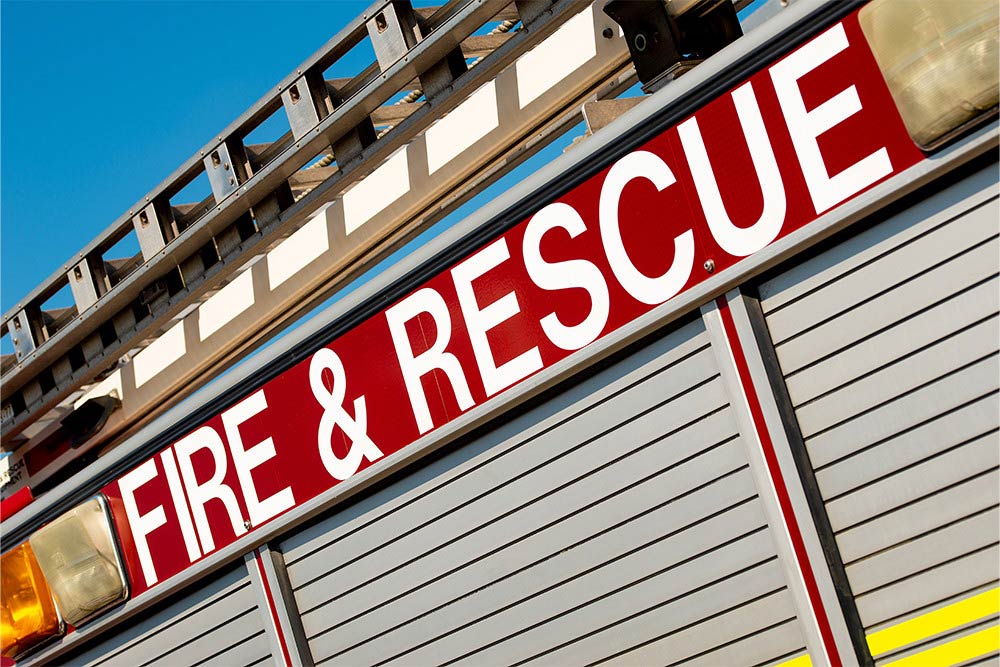
You’ve followed the fire safety legislation. You’ve worked hard to make your building safe, compliant and hazard free. You’ve completed a thorough and detailed fire risk assessment. It’s ready for anyone who needs to see it. But who does need to see it?
In this blog, we explain who is responsible for enforcing fire safety legislation, how they do it and what can happen if you don’t meet fire safety standards.
What Legislation Governs Fire Safety?
The Regulatory Reform (Fire Safety) Order 2005 is the main piece of legislation governing fire safety in England and Wales. There is separate fire safety legislation for Scotland and Northern Ireland.
This legislation is also called the Fire Regulatory Safety Order or Fire Safety Order.
The Fire Regulatory Safety Order brought together around 70 different pieces of legislation to simplify fire safety laws. It provides a framework for regulating fire safety in all non-domestic premises. This is essentially all buildings other than private homes, including workplaces. However, it still applies to the shared areas in houses in multiple occupation (HMOs), blocks of flats and maisonettes.
Who is Responsible for Fire Safety in Non-Domestic Premises?
The Responsible Person. This is a legally designated position and not just a matter of opinion.
You’re the Responsible Person if you’re:
- An employer
- The owner of a property
- The landlord
- An occupier
- A facilities manager or someone with control over the premises
The Responsible Person must make sure their building meets the minimum fire safety standard as set out in the Fire Regulatory Safety Order. This includes completing fire risk assessments, planning for emergencies and providing staff with fire safety training.
If you have a legal duty for fire safety, the government has made guidance widely available. There have also been recent updates, which are explained in this blog.
So Who is Responsible for Enforcing Fire Safety Legislation?
Fire safety legislation is usually enforced by your local Fire and Rescue Authority (FRA).
You should contact your local fire and rescue service if you don’t know your local FRA. They’ll be able to tell you who to speak to. Your local council will also be able to point you in the right direction.

The Health and Safety Executive holds responsibility in some exceptions however. This includes construction sites and ships undergoing repair.
How do Fire and Rescue Authorities Enforce Fire Safety Legislation?
Fire and Rescue Authorities have a number of key responsibilities:
- Putting out fires in their local area
- Protecting life and property in the event of a fire
- Rescuing and protecting people in the event of a road traffic collision
FRAs also play a proactive role in preventing fires, not just responding to them. This is partly achieved by enforcing the Fire Safety Order.
FRAs employ inspectors to check buildings and ensure Responsible Persons have achieved fire safety standards.
What Does an FRA Inspector Do?
FRA Inspectors can:
- Inspect premises
- Check compliance against the Regulatory Fire Safety Order
- Take material samples to check their safety/flammability
- Order any materials found unsafe to be destroyed, dismantled or tested further
- Request access to records and plans relating to the most recent Fire Risk Assessment
An inspector will usually let you know if they’re coming but they do drop in unannounced. They will expect help from the Responsible Person or Persons when completing an inspection.
What Happens If You Don’t Meet Fire Safety Standards?
An informal notice is often the first step. This offers suggestions to improve fire safety.
But more serious issues may incur a formal notice. This will tell you directly what you need to do.
There are a number of different formal notices:
- Alterations notice – for premises with high safety risks
- Enforcement notice – outlines what changes need to happen and by when, for serious risks
- Prohibitions notice – prohibits or restricts use of the premises immediately because the fire risk is so severe
There are further consequences if you don’t meet fire safety regulations. Fines start at £5,000 for minor penalties. Major penalties can incur prison sentences of up to two years and unlimited fines.
The current record holder is private healthcare provider BUPA. It was ordered to pay a fine of £937,500 in early 2022. It was found that the company had overlooked certain fire safety concerns when completing a risk assessment for one of its care homes. This sadly led to the death of a resident.
Where to Learn More About Fire Safety
A lack of fire safety awareness is no excuse for failing to comply with fire safety legislation. Your business and employees are at risk without adequate fire safety training and awareness.
Our Fire Awareness Training courses are an important tool for fire safety in the workplace. They equip trainees with the knowledge to adequately prevent fires and help those responsible for fire safety meet legal requirements.



























































































































































































































































































































































































































































































































































































































































































































































